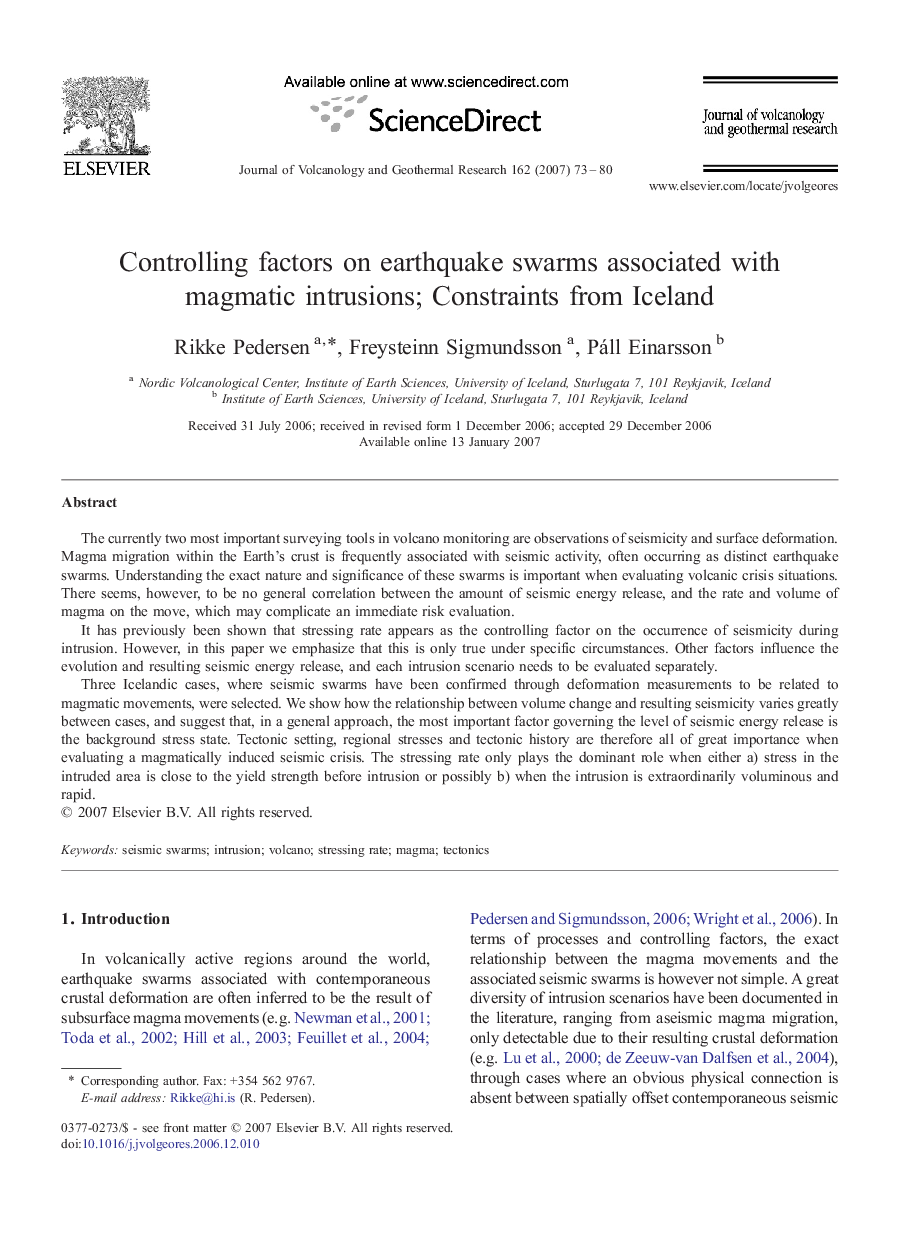| Article ID | Journal | Published Year | Pages | File Type |
|---|---|---|---|---|
| 4714816 | Journal of Volcanology and Geothermal Research | 2007 | 8 Pages |
The currently two most important surveying tools in volcano monitoring are observations of seismicity and surface deformation. Magma migration within the Earth's crust is frequently associated with seismic activity, often occurring as distinct earthquake swarms. Understanding the exact nature and significance of these swarms is important when evaluating volcanic crisis situations. There seems, however, to be no general correlation between the amount of seismic energy release, and the rate and volume of magma on the move, which may complicate an immediate risk evaluation.It has previously been shown that stressing rate appears as the controlling factor on the occurrence of seismicity during intrusion. However, in this paper we emphasize that this is only true under specific circumstances. Other factors influence the evolution and resulting seismic energy release, and each intrusion scenario needs to be evaluated separately.Three Icelandic cases, where seismic swarms have been confirmed through deformation measurements to be related to magmatic movements, were selected. We show how the relationship between volume change and resulting seismicity varies greatly between cases, and suggest that, in a general approach, the most important factor governing the level of seismic energy release is the background stress state. Tectonic setting, regional stresses and tectonic history are therefore all of great importance when evaluating a magmatically induced seismic crisis. The stressing rate only plays the dominant role when either a) stress in the intruded area is close to the yield strength before intrusion or possibly b) when the intrusion is extraordinarily voluminous and rapid.
